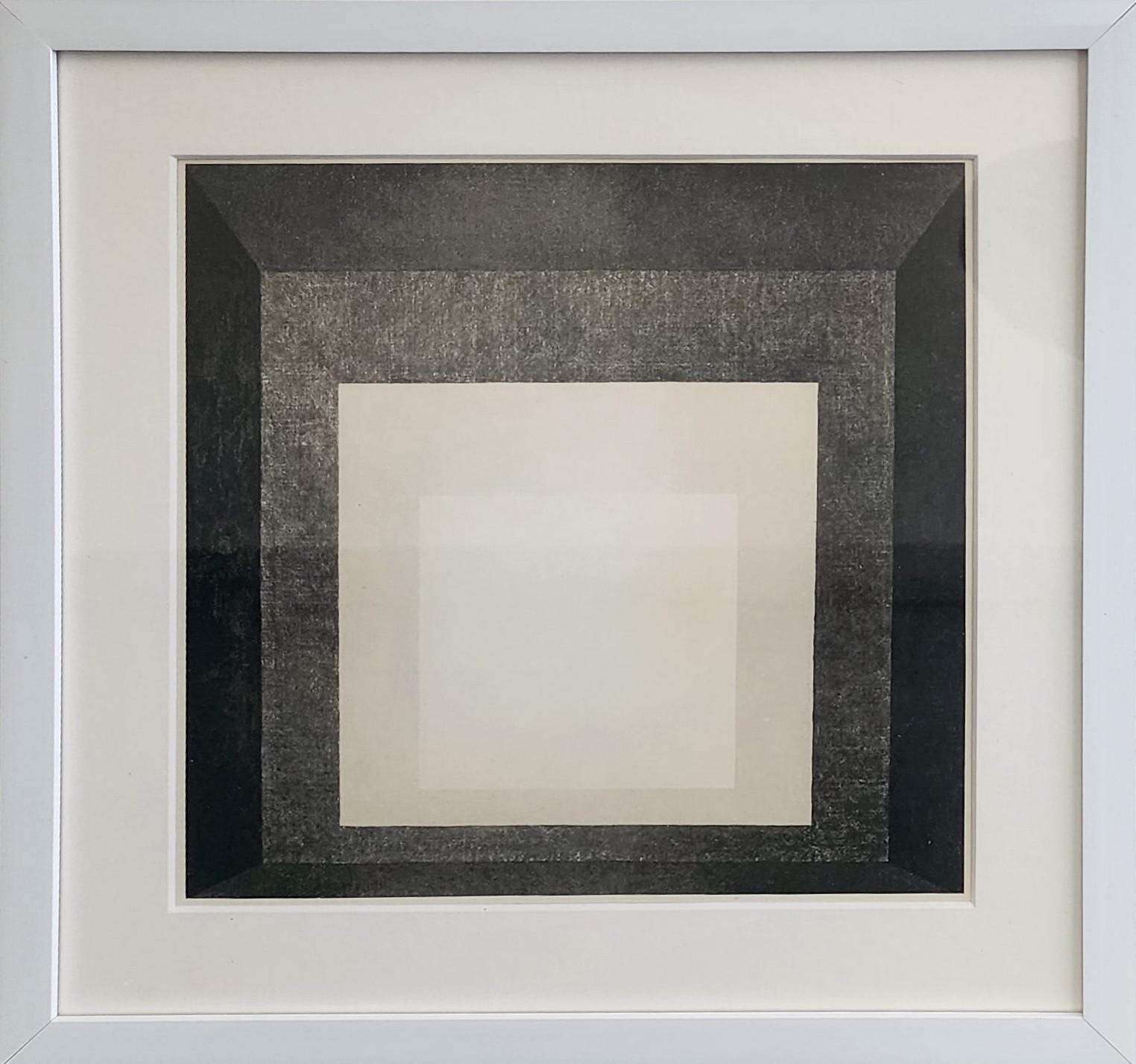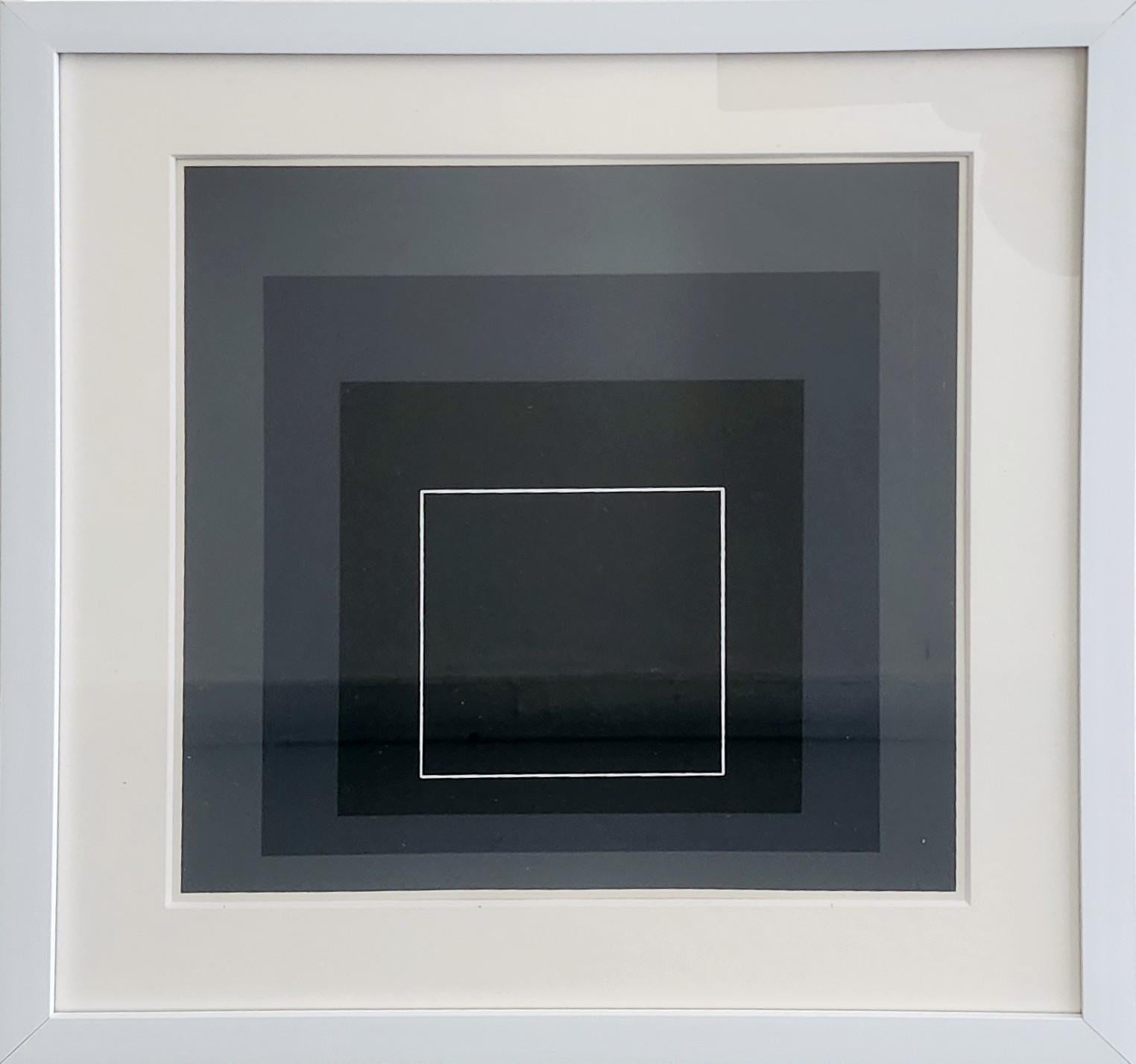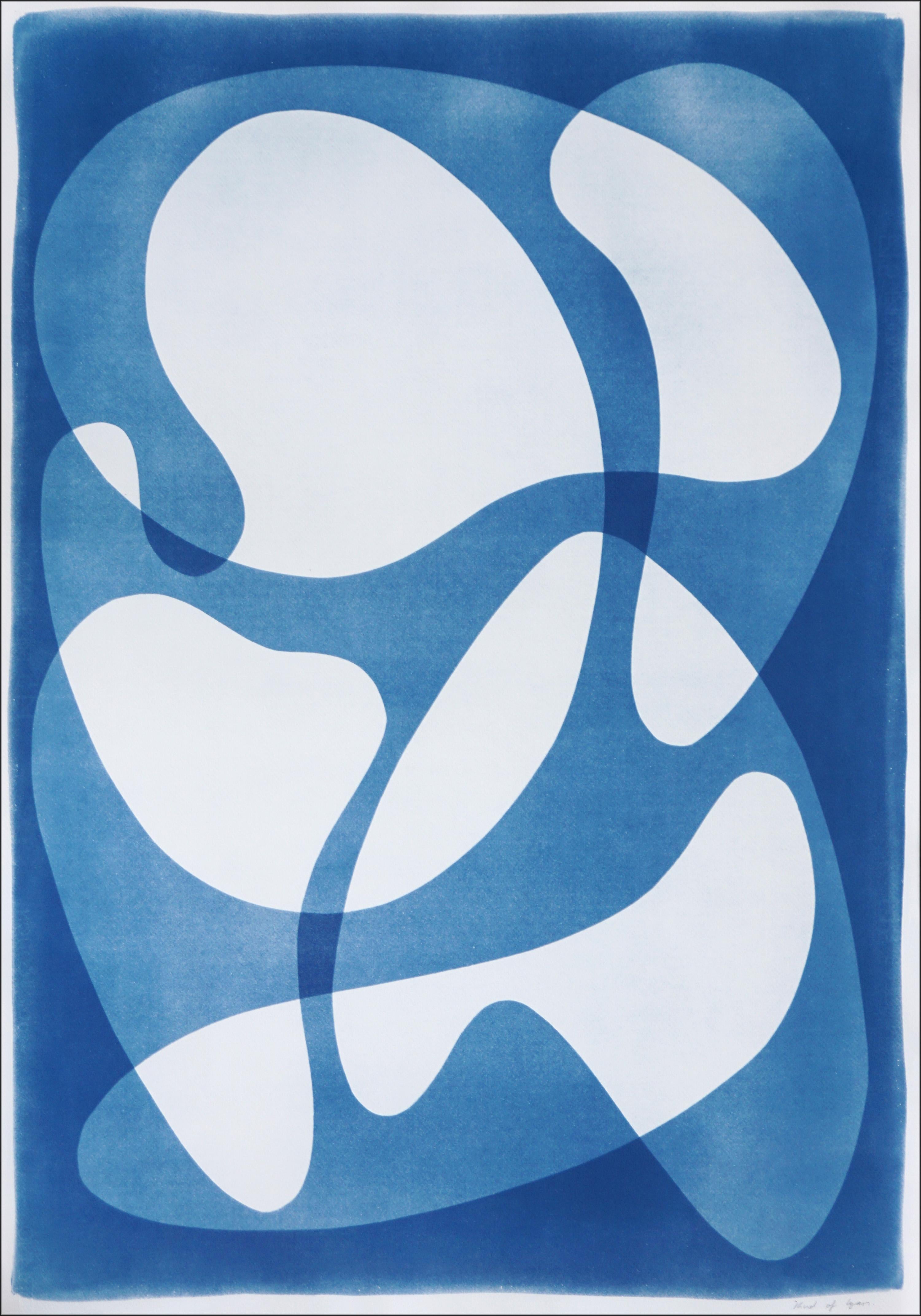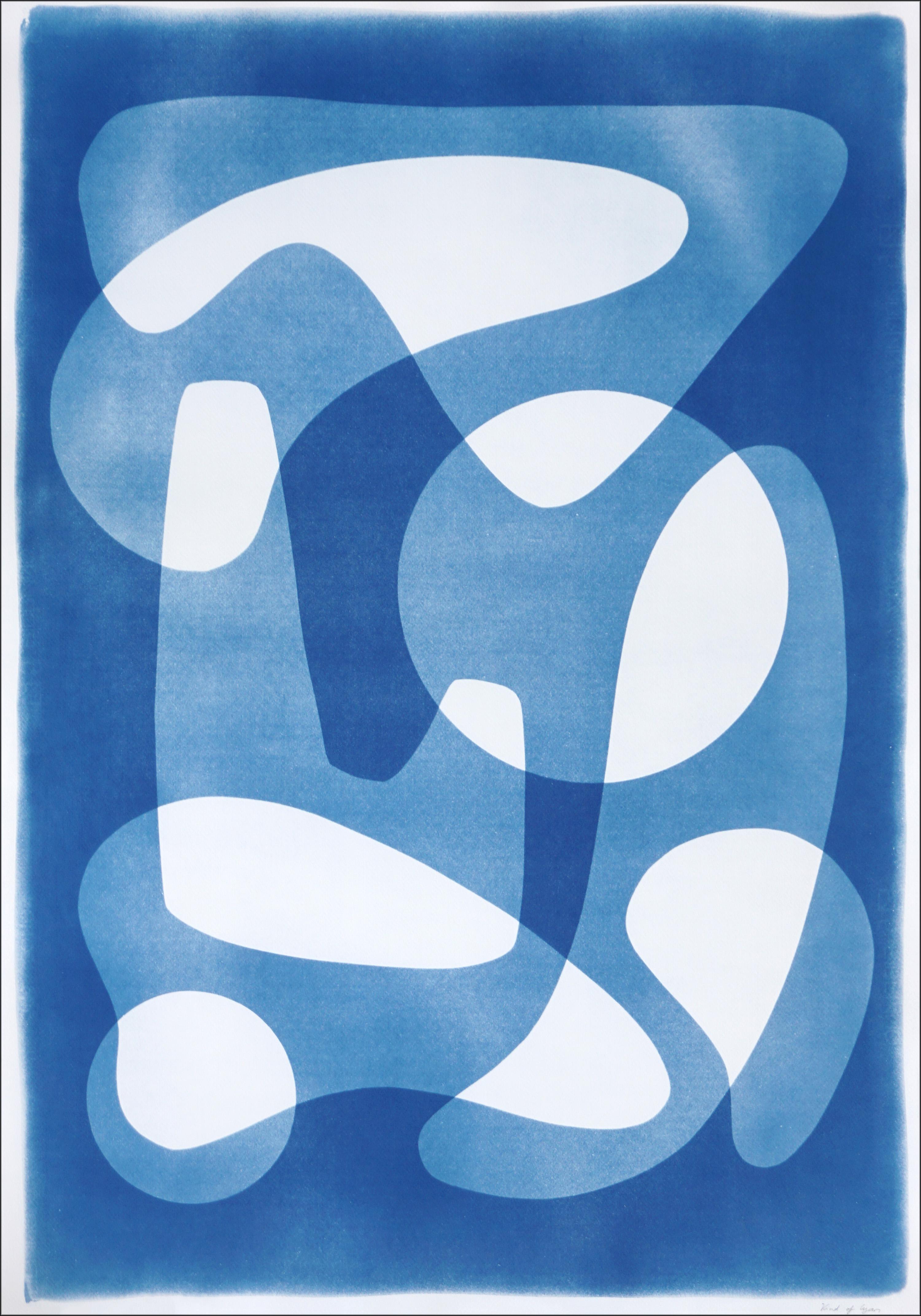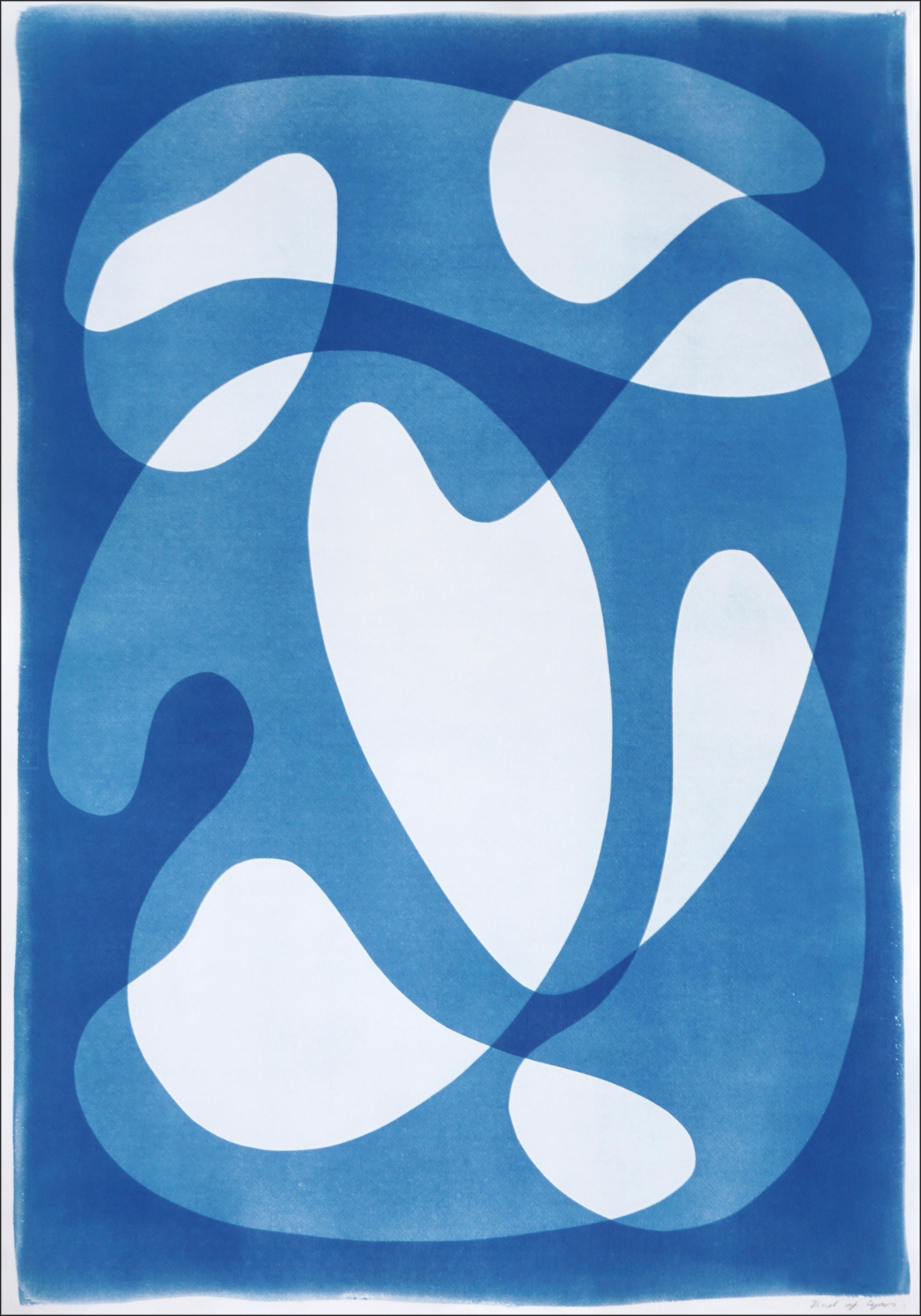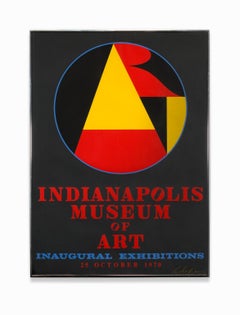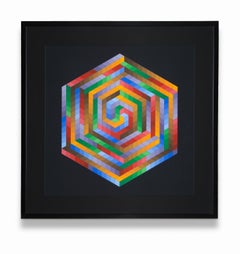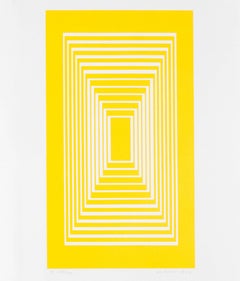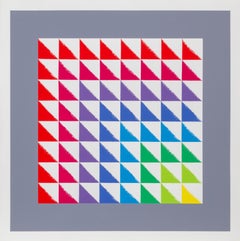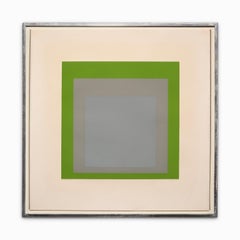
"Pending", Original Abstract Screenprint, Titled, Signed, and Numbered in Pencil
View Similar Items
Josef Albers"Pending", Original Abstract Screenprint, Titled, Signed, and Numbered in Pencil1965
1965
About the Item
- Creator:Josef Albers (1888 - 1976, American, German)
- Creation Year:1965
- Dimensions:Height: 18.25 in (46.36 cm)Width: 18.25 in (46.36 cm)
- Medium:
- Movement & Style:
- Period:
- Condition:Very good condition, has been professionally cleaned by Kenneth Katz.
- Gallery Location:Detroit, MI
- Reference Number:1stDibs: LU128617297132
Josef Albers
The German-born American painter, writer, and educator Josef Albers was a pioneer of 20th century modernism, and an innovative practitioner of color theory. With his wife, the textile artist and printmaker Anni Albers (1899–1994), he shaped the development of a generation of American artists and designers through his teaching at the experimental Black Mountain College in North Carolina, and later at Yale University School of Art, where he was the chairman of the department of design from 1950–1958. Albers is widely known for his series of prints and paintings "Homages to the Square," which he created between 1950 and 1975. His influential volume on color theory The Interaction of Color was published in 1963.
Albers was born in Bottrop, Germany, and as a young man he studied art education, earning certification from the Königliche Kunstschule in Berlin in 1915. He entered the legendary Bauhaus school in Weimar in 1920. The Bauhaus had been established by Walter Gropius in 1919, in the immediate aftermath of World War I, with the hope that its innovative curriculum would foster connections between architecture, art, and traditional crafts. In 1923 Albers began teaching the Vorkurs, the introductory class in which new students learned to work with each of the key artists’ materials, along with color theory, composition, construction and design.
Albers was a polymath, and the multidisciplinary environment of the Bauhaus was fertile ground for his artistic ambitions. When the school moved from Weimar to Dessau in 1925, he became a full professor, and in addition to glass and metal, he designed typefaces and furniture. While at the Bauhaus, Albers drew inspiration from the work of his colleagues, the color theorist Johannes Itten, and the painter, photographer, and designer László Moholy-Nagy, with whom he co-taught the Vorkurs.
In 1933, the Bauhaus was shut down due to pressure from the Nazi Party, which perceived the school as being sympathetic to communist intellectuals. As Albers’ wife Anni was Jewish, the couple resolved to leave Germany, and settled in rural North Carolina. The architect Philip Johnson helped make arrangements for Albers to join the faculty of Black Mountain College as the head of the painting program, where he remained until 1949. While at Black Mountain, both Josef and Anni Albers became influential mentors to American artists including Ruth Asawa, Cy Twombly, and Robert Rauschenberg, while working alongside fellow professors Buckminster Fuller, John Cage, Merce Cunningham and William de Kooning.
In 1950, Albers joined the faculty of the Yale University School of Art where he would head the newly established Department of Design until his retirement in 1958. In the 1950s, the Alberses began taking trips to Mexico, where the colors and forms of the local art and architecture inspired both artists.
In 1971, Albers became the first living artist whose work was the subject of a solo retrospective at the Metropolitan Museum of Art. Though they worked in different mediums, Josef and Anni Albers’ work shares a fascination with color and geometry. Josef Albers’ compositions from the "Homages to the Square" series, such as Formulation: Articulation Portfolio II Folder 28 (B), from 1972, give deceptively simple shapes a novel vibrance as colors play off of one another. The hues in Articulation Portfolio II Folder 28 (B) work in concert to give the flat surface the distinct appearance of a tunnel or other three-dimensional space; while the form on the left appears to move towards the viewer, the form on the right seems to lead directly into the canvas. Similarly, Anni Albers’ designs for textiles use graphic design to lend a sense of dynamism to flat works. Her Study for Unexecuted Wall Hanging (Bauhaus), from 1984 is a Mondrian-like pattern for a weaving in which different colors alternately recede and advance into the foreground, giving the image a sense of complexity and uncanny depth.
Josef Albers also created works of public art, including a delicate, geometric gold leaf mural called Two Structural Constellations for the lobby of the Corning Glass building in New York City in 1959. He designed a work called Two Portals for the lobby of the Time & Life Building in 1961, in which which and brown bands move towards two square panels made of bronze. Walter Gropius invited Albers to create a piece for the Pan Am Building, which he was designing with the architectural firm of Emery Roth & Sons. Albers reworked an existing glass piece from his Bauhaus days called City, and, fittingly, renamed it Manhattan.
Find a collection of authentic Josef Albers art on 1stDibs.
- "Indianapolis Museum of Art Inaugural Exhibitions", Color Silkscreen, SignedBy Robert IndianaLocated in Detroit, MI"Indianapolis Museum of Art Inaugural Exhibitions", 25 October 1970, is an eye popping large bold colorful geometric abstract silk screen. It is signed on the lower right. Robert Indiana, one of the preeminent figures in American art since the 1960s, played a central role in the development of assemblage art, hard-edge painting, Pop art, Neo-Dada, American Modernism and Modern Art. A self-proclaimed “American painter of signs,” Indiana created a highly original body of work that explores American identity, personal history, and the power of abstraction and language, establishing an important legacy that resonates in the work of many contemporary artists such as Andy Warhol, Keith Haring, Roy Lectenstein, David Hockney, Romero Britto, Richard Hamilton and Robert Rauschenberg who make the written word a central element of their oeuvre. Robert Indiana was born Robert Clark in New Castle, Indiana on September 13, 1928. Adopted as an infant, he spent his childhood moving frequently throughout his namesake state. At 14 he moved to Indianapolis in order to attend Arsenal Technical High School, known for its strong arts curriculum. After graduating he spent three years in the U.S. Air Force and then studied at the Art Institute of Chicago, the Skowhegan School of Sculpture and Painting in Maine, and the Edinburgh College of Art in Scotland. In 1956, two years after moving to New York, Indiana met Ellsworth Kelly, and upon his recommendation took up residence in Coenties Slip, where a community of artists that would come to include Kelly, Agnes Martin, James Rosenquist, and Jack Youngerman had studios. Indiana, like some of his fellow artists, scavenged the area’s abandoned warehouses for materials, creating sculptural assemblages from old wooden beams, rusted metal wheels, and other remnants of the shipping trade that had thrived in Coenties Slip. The discovery of 19th century brass stencils led to the incorporation of brightly colored numbers and short emotionally charged words onto these sculptures as well as canvases, and became the basis of his new painterly vocabulary. Although acknowledged as a leader of Pop, Indiana distinguished himself from his Pop peers by addressing important social and political issues and incorporating profound historical and literary references into his works. In 1964 Indiana accepted Philip Johnson’s invitation to design a new work for the New York State Pavilion at the New York World’s Fair, creating a 20-foot EAT sign...Category
1970s American Modern Abstract Prints
MaterialsPaper, Ink, Screen
$1,760 Sale Price20% Off - Victor Vasarely Screen Print Abstract, Geometric Squares Cubes HexagonBy Victor VasarelyLocated in Detroit, MIVictor Vasarely born in 1906 was a Hungarian-French artist, who is widely accepted as a "grandfather" and leader of the Op Art movement. Op Art is a form of abstract art that gives the illusion of movement by the precise use of pattern and color, or in which conflicting patterns emerge and overlap. Victor Vasarely and Brigit Riley are its most famous exponents. In its visual balancing act of color and movement from a flat plane to developed continuous flow “Untitled” is a complex arrangement of squares and colors that visually expand and contract. It is one of Vasarely’s most successful Op Art abstract works. The piece is signed on the lower right and number 20/150 on the lower left. The print is behind glass and matted. Vasarely was born in Pecs and grew up in Slovakia and Budapest, where in 1925, he took up medical studies. Abandoning medicine he turned to traditional academic painting at the private Podolini-Volkmann Academy. In 1928/1929, he enrolled at Sandor Bortnyik’s private art school widely recognized as Budapest's centre of Bauhaus studies. His studies concentrated on applied graphic art and typographical design. In 1929, he painted his Blue Study and Green Study. In 1930, he married his fellow student Claire Spinner (1908–1990). Together they had two sons, Andre and Jean-Pierre. Vasarely became a graphic designer and a poster artist during the 1930s combining patterns and organic images with each other. Vasarely utilized geometric shapes and colorful graphics, the artist created compelling illusions of spatial depth, as seen in his work Vega-Nor (1969). Vasarely’s method of painting borrowed from a range of influences, including Bauhaus design principles, Wassily Kandinsky, and Constructivism. In the late 1920s, Vasarely enrolled at the Muhely Academy in Budapest, where the syllabus was largely based on Walter Gropius’s Bauhaus school in Germany. After settling in Paris in 1930, Vasarely worked in advertising agencies to support himself as a graphic artist while creating many works including Zebra (1937), which is considered by some to be one of the earliest examples of Op Art. The artist experimented in a style based in Surrealism and Abstract Expressionism during the 1940s, before arriving at his hallmark checkerboard...Category
Mid-20th Century Op Art Abstract Prints
MaterialsPaper, Screen
$1,920 Sale Price20% Off - Giuseppe Capogrossi Iconic Comb Design "Superficie 324" SerigrafiaLocated in Detroit, MI"Superficie 324" is a 1988 screen print (serigraph) of a 1959 painting by Capogrossi. This is one of his famous "comb" or "fork" works that he perfected in the 1950s and continued to create for the remainder of his life. The blocks of primary red and yellow colors give a bright, joyful feel and contrast to the strong bold black that was Capogrossi's consistent color for the "combs". With no allegorical, psychological, or symbolic meanings, these structural elements could be assembled and connected in countless variations. Intricate and insistent, Capogrossi's signs determined the construction of the pictorial surface. This piece is identified along one side: Giuseppe Capogrossi By SIAE 1988 Silvio Zamorani Editor Via Saccarelli, 9 10144 Torino Italy Tel. (39)(11) 4730554 Progetto Grafico (Graphic Project): Studio Walter Benjamin. Serigrafia (Screen Print): BISI Torino. Capogrossi was born in Rome. After obtaining a degree in law in 1923–1924, he decided to study painting with Felice Carena at Accademia di Belle Arti di Roma. In 1927 Capogrossi embarked on a formative trip to Paris together with fellow artists and acquaintances Fausto Pirandello, Corrado Cagli and Emanuele Cavalli...Category
1950s Abstract Expressionist Abstract Prints
MaterialsScreen
- Joyce T. Nagel Collagraph "Earthcore" Signed Dated Ltd EdLocated in Detroit, MI"Earthcore" is an abstract of a familiar image ... a view of earth sliced in half usually as an explanation of the many layers of spaceship earth. This print is more than its title. It is rich in its depth of color and texture. Upon close inspection there is much activity on the surface which continually adds to its visual complexity. The name given to this print process is “Collagraph” It is made by glueing different materials to cardboard and creating a kind of collage. During the inking process the ink will rub off surfaces that are smooth or higher and stay on surfaces that hold more ink, at edge and at lower points thus creating the image. To protect the plate through the printing process it’s sealed with one or more layers of shellac. A collagraph plate is quite sensitive and will be deformed by the pressure of the printing press. Joyce Tilley Nagel...Category
1960s Abstract Expressionist Abstract Prints
MaterialsPaper, Ink
- Joyce T. Nagel Print "Orange" AP 1 Artist's Proof Handmade Paper Signed DatedLocated in Detroit, MI"Orange" is marked AP 1 meaning it was the print pulled and approved by the artist before additional prints were made. It is a colorful and lively abstract arrangement of circles and squares and printed on hand-made paper. Joyce Tilley Nagel...Category
1970s Modern Abstract Prints
MaterialsInk, Paper
- Joyce T. Nagel Collagraph Embossed "Telescoping Triangle"Located in Detroit, MI“Telescoping Triangle” is a stunningly interesting work of art in deep muted shades of alizarin crimson and gray with slashes of black. The embossed design adds depth and complexity to the piece in which two basic shapes of the universe, the rectangle and the triangle, are the main pattern and then repeated in various sizes and placement in the impressed image. The name given to this print process is “Collagraph” It is made by glueing different materials to cardboard and creating a kind of collage. During the inking process the ink will rub off surfaces that are smooth or higher and stay on surfaces that hold more ink, at edge and at lower points thus creating the image. To protect the plate through the printing process it’s sealed with one or more layers of shellac. A collagraph plate is quite sensitive and will be deformed by the pressure of the printing press. Joyce Tilley Nagel...Category
1980s Abstract Prints
MaterialsPaper, Ink
$300 Sale Price40% Off
- IBy Josef AlbersLocated in Cambridge, ONJosef Albers (1888-1976) born in Bottrop, Germany, enrolled at the Bauhaus - the recently founded school of art, architecture, and design in Weimar, Germany - in 1920. Placing equal ...Category
1970s Bauhaus Abstract Prints
MaterialsScreen
$5,800 - Homage to the Square (Hommage au Carre) (Bauhaus, Geometric Abstraction)By (after) Josef AlbersLocated in Kansas City, MOJosef Albers Homage to the Square (Hommage au Carre) (Bauhaus, Geometric Abstraction) Screenprint in brilliant Colors on wove paper Year: 1972 From “Josef Albers: Son Oeuvre et Sa C...Category
1970s Bauhaus Prints and Multiples
MaterialsScreen
- Triangulated Squares, Bauhaus Silkscreen by Herbert BayerBy Herbert BayerLocated in Long Island City, NYArtist: Herbert Bayer, Austrian (1900 - 1985) Title: Triangulated Squares Year: 1969 Medium: Screenprint, signed in pencil Size: 32 in. x 33 in. (81.28 cm x 83.82 cm) Printed at Kel...Category
1960s Bauhaus Abstract Prints
MaterialsScreen
- Bauhaus (Red and Green), Geometric Abstract Screenprint by Gisela BekerBy Gisela BekerLocated in Long Island City, NYArtist: Gisela Beker, German/American (1932 - 2015) Title: Bauhaus (Red and Green) Year: Circa 1975 Medium: Serigraph, signed and numbered in pencil E...Category
1970s Bauhaus Abstract Prints
MaterialsScreen
- Homage to the Square (Hommage au Carre) (Bauhaus, Geometric Abstraction)By (after) Josef AlbersLocated in Kansas City, MOJosef Albers Homage to the Square (Hommage au Carre) (Bauhaus, Geometric Abstraction) Screenprint in brilliant Colors on wove paper Year: 1972 From “Josef Albers: Son Oeuvre et Sa C...Category
1970s Bauhaus Prints and Multiples
MaterialsScreen
- Homage to the Square (Hommage au Carre) (Bauhaus, Geometric Abstraction)By (after) Josef AlbersLocated in Kansas City, MOJosef Albers Homage to the Square (Hommage au Carre) (Bauhaus, Geometric Abstraction) Screenprint in brilliant Colors on wove paper Year: 1972 From “Josef Albers: Son Oeuvre et Sa C...Category
1970s Bauhaus Prints and Multiples
MaterialsScreen

